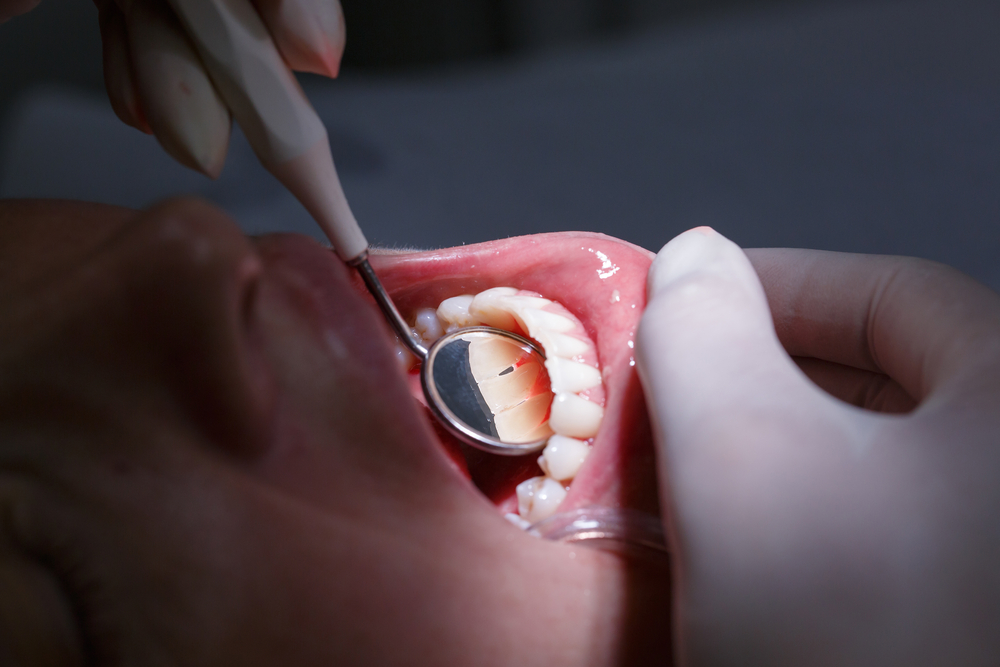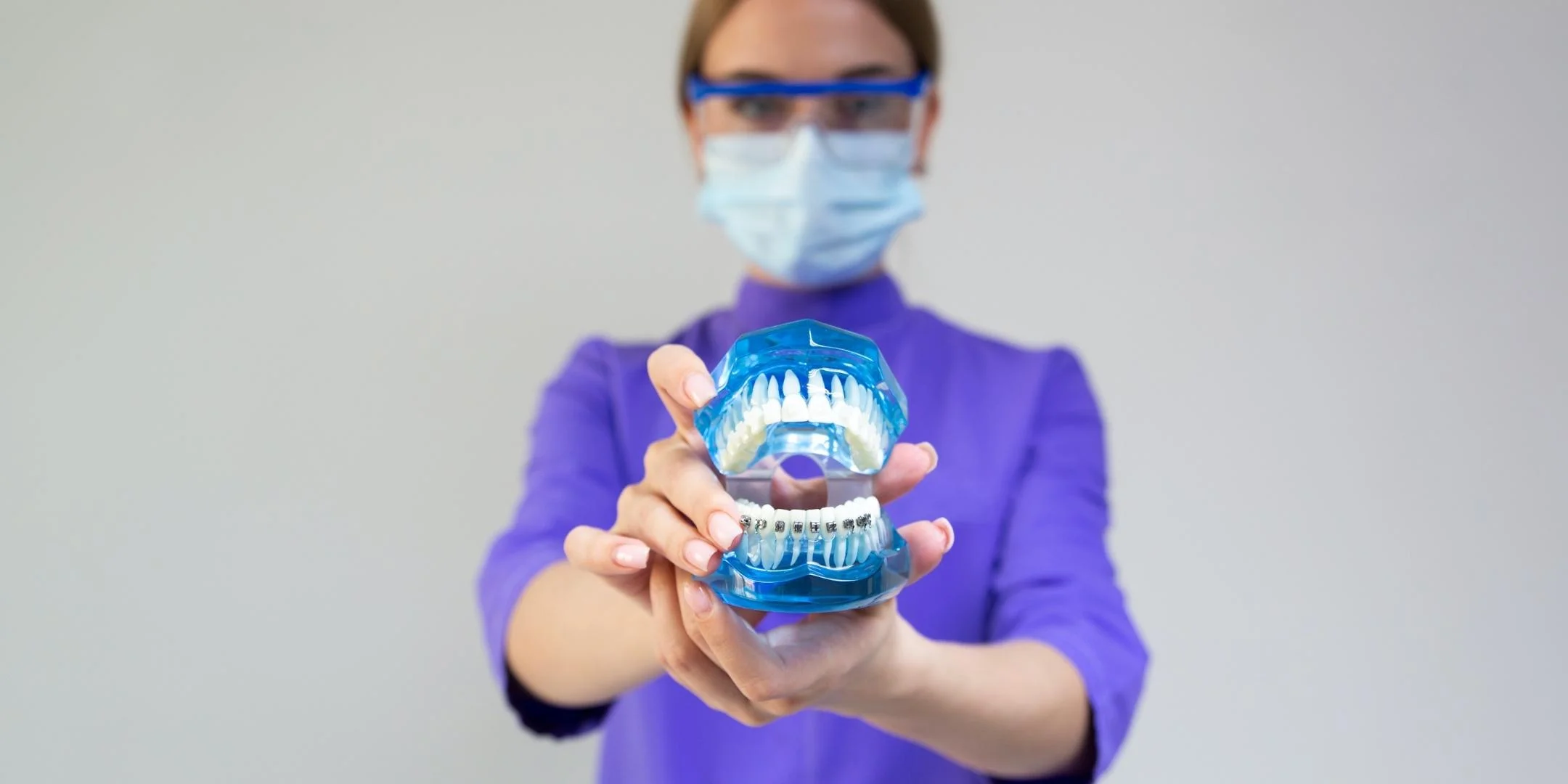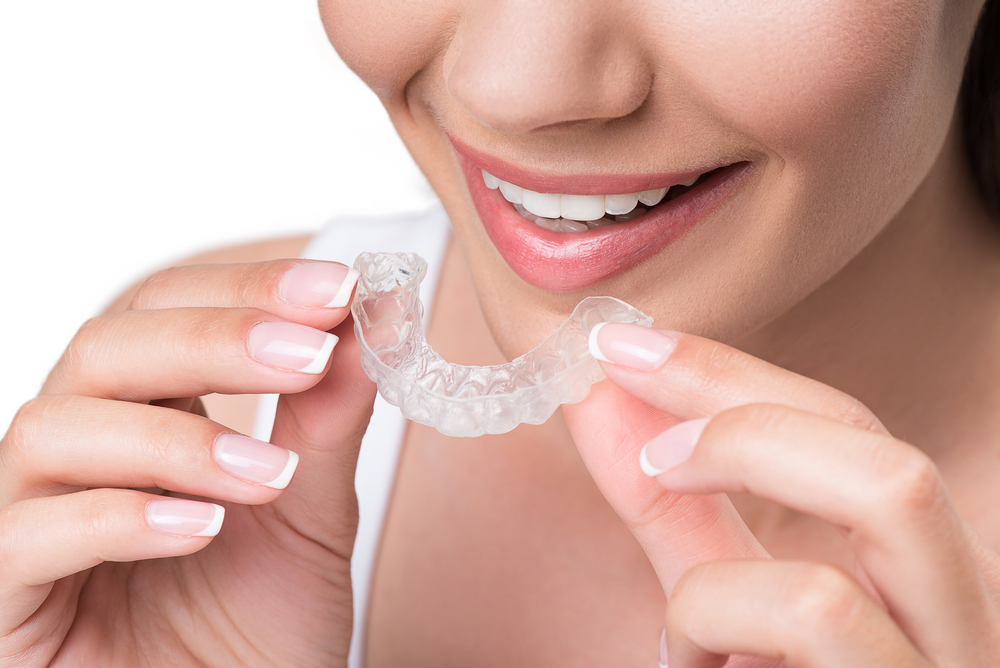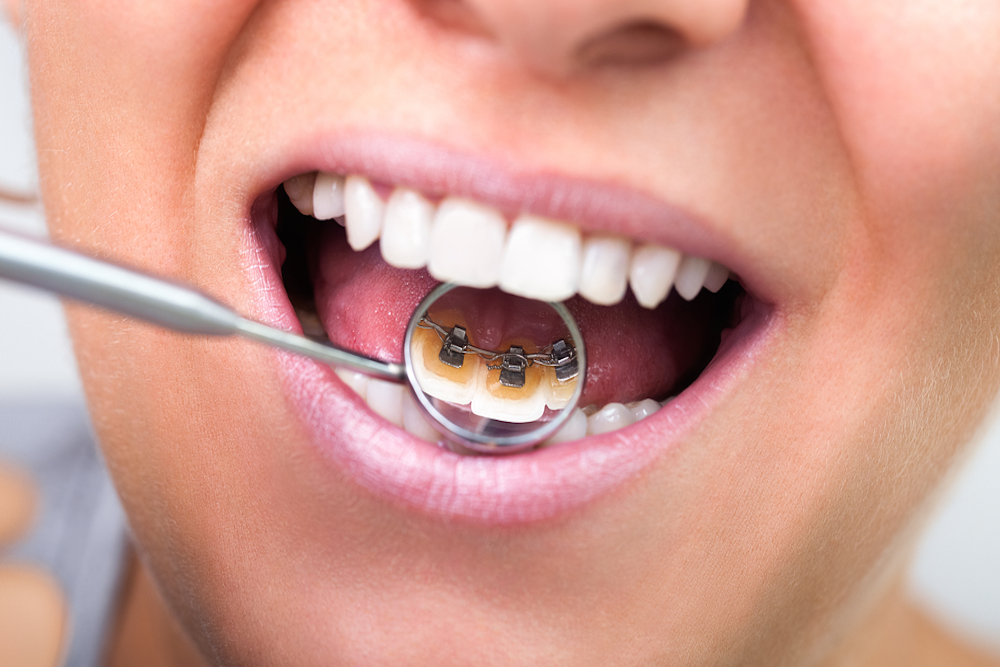If you’re after a selfie-worthy smile but experience gum recession (also called gingival recession), there’s some good news on the horizon. Cosmetic dentists have developed a range of new, non-surgical gum recession treatment options that can help you achieve picture-perfect pearly whites.
Not only are receding gums problematic for those who want perfect teeth, but they can also open up the floodgates to disease-causing bacteria that can compromise the health of your teeth. People with extreme cases of gum recession may even experience tooth loss if not properly treated.
Gum recession, in short, is the wearing away of the gum tissue that surrounds the teeth. As your gums recede, more of the tooth enamel shows. What’s more, receding gums can leave pockets between the gums and the teeth and create a super-hospitable environment for bacteria to harbor. Most people in the early stages of gum recession experience tooth sensitivity or a subtle notch at the gum line. Because recession occurs gradually and may signify an underlying dental disease or issue, it’s important to pay close attention to the warning signs.
What Causes Gum Recession?
Gum recession is caused by periodontal disease (gum disease), a bacterial infection that destroys the gum tissue. Not only can periodontal disease cause the gums to pull away from the teeth, but also cause them to bleed easily and become red, swollen and tender. This condition can further trigger bad breath, inflammation, and with time, other dental problems as well.
“The bacteria most responsible for periodontal disease are anaerobes,” said Dr. Ron Rosenthal, a retired dentist. “They are ones which live in an oxygen-free environment, like the groove between the teeth and gum tissue. They collect in that area, forming large colonies. When you eat, they eat. When you drink, they drink. And, like you, they put out waste products, in this case acid, which destroys the attachment of the gums to the tooth, thus allowing the acid to get into the underlying bone. That’s periodontal disease.”
Periodontal disease may be brought on or worsened by genetics. If your parents have it, there’s a good chance you’ll have it too. With that being said, there are several secondary factors that can contribute to gum disease, including poor oral hygiene, smoking, pregnancy and taking medications that limit the body’s ability to retain calcium. Diabetes, especially if not properly treated, is another significant contributor to periodontal disease.
Despite the fact that this condition is alarming, the American Academy of Periodontology reports that half of American adults have periodontal disease. The most common course of action to repair gum recession is surgery, called gum grafting, where a tissue graft of the existing gum is used to patch the area of the gums that have receded. Fortunately, there are a few non-surgical methods available too.
Preventing Gum Recession
If you’re worried that you have early signs of periodontal disease or gum recession, it’s not too late to get on a good preventative schedule so your condition doesn’t worsen. The American Dental Association (ADA) warns that untreated periodontal disease can lead to periodontitis, a much more aggressive and hard-to-treat form of periodontal disease. Brush your teeth twice a day, eat a balanced diet, floss daily and see your dentist for regular cleanings to help prevent gum disease and recession.
The importance of addressing periodontal disease and practicing good oral hygiene before the condition worsens is essential, according to Dr. Alex Shalman, DDS, of Shalman Dentistry in New York. “Although each medical situation in which gum recession occurs is different and must be fully taken into account with regard to treatment, it is most important to diagnose and treat the source of this recession to ensure that further recession does not follow,” notes Shalman.
Non-Surgical Treatment Options
Treating gingival recession with gum graft surgery is the preferred method of many dentists. “Surgery is often the primary choice of treatment because it effectively restores gums to the levels at which they were before. However, in certain cases it is appropriate to fill in voids left by the recession with composite bonding or porcelain veneers,” says Shalman.
The Keyes Method: Deep Cleaning
With that being said, there are a variety of non-surgical options that can be used to help treat and prevent recession. Many of these options are designed to target periodontal disease by removing harmful bacteria that can lead to recession, gingivitis, tooth loss and tooth decay.
According to Dr. Rosenthal, there’s a tried-and-true method called The Keyes Method which he stands by for treating periodontal disease. The technique was developed in the 1960s by Dr. Paul Keyes and uses a deep bacteria removal method to clean the teeth thoroughly. With a peroxide solution for cleaning and then a salt solution to remove the bacteria, gums are free of the agents that cause recession.
“Between these two actions you eliminate all the bacteria in the mouth, and the body can heal the gums and bone. I’ve used the Keyes technique successfully with hundreds of patients,” says Dr. Rosenthal.
Porcelain Veneers or Bonding
As mentioned by Dr. Shalman, it’s possible to use bonding and veneers to treat receding gums. However, this method is not a fix-all for periodontal disease and can only be used to conceal the cosmetic issues associated with the condition. If you’ve experienced years of slow gum recession, you can combine a deep cleaning, some lifestyle changes and the Keyes Method to eradicate recession, and then use veneers or dental bonding to address cosmetic issues.
Veneers or dental bonding can also be used to fill in spaces created by crooked teeth, which often harbor bacteria and lead to periodontal disease over time. Those with mild gum recession or in the early stages of periodontal disease can make lifestyle changes — like addressing poor oral hygiene — and use porcelain veneers alongside good dental health to combat the condition.
Home Remedies
There’s simply no replacement for professional oral care, but slowing gingival recession at home is a good course of action for anyone at risk of periodontal disease. You can create your own gum disease-fighting mouthrinse using all-natural solutions like green tea, sea salt, aloe vera gel, coconut oil and vitamin C. These are all fortified with ingredients that not only help prevent and treat receding gums, but also aid with managing symptoms like soreness and inflammation. For example, a coconut oil and sea salt rub delivers anti-inflammatory properties that help soothe the gums.
Another popular option for treating receding gums the DIY way is called oil pulling. This involves swishing the mouth with a natural oil, like coconut or sesame oil, to remove toxins from the mouth that can cause a range of oral diseases and issues. Bonus: studies show that oil pulling is just as effective at treating bad breath as your regular mouthwash.
Antibiotics
Using antibiotics can help control the bacteria that triggers gingival recession caused by periodontal disease. Simply put, antibiotics kill bacteria so they can effectively slow, treat and completely reverse gum disease. Dentists often prescribe antibiotics either in the form of topical gels and creams or oral medications to treat moderate to severe conditions. In fact, dentists sometimes even place antibiotics directly into the gum pocket to treat periodontitis.
But, as you probably know, medical professionals have wisely started prescribing antibiotics less and less these days— antibiotics increase the risk of germs that are resistant to drugs — so you’ll want to take them as sparingly as possible. Another good option is using antimicrobial therapy with antiseptic mouthwashes and toothpastes that kill bacteria on contact.
What About Surgery?
If you’ve tried all of these techniques and still experience recession, you may want to talk to your dentist about the various surgical procedures available. Although gum recession surgery sounds scary, it’s actually not a very demanding procedure and doesn’t come with a laundry list of side effects or a difficult recovery period. The worst part about the procedure is that you’ll probably need to limit your consumption of solid food for a couple of weeks following surgery.
There are three common techniques used in gum grafting procedures: connective-tissue grafts, free gingival grafts, and pedicle grafts. These approaches all take tissue from another part of the mouth to treat the receding area. Tissue grafts from your own body will help the body regenerate new tissue and bone naturally. Your dentist will be able to determine which type of gingival recession surgery technique is best suited for your specific situation.









